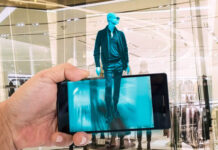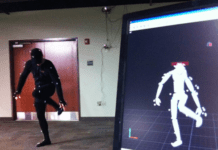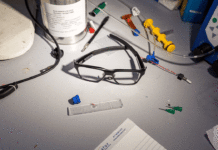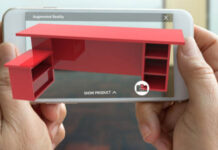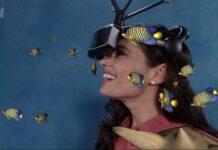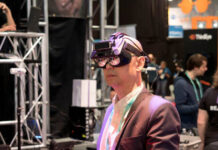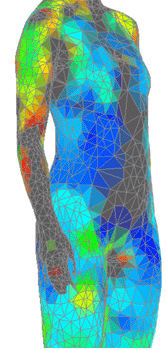
Just when you think online shopping could not get any better. What more can you ask for when you are able to buy your favorite products with a click of a mouse without leaving the house – or the couch, for that matter? Of course, there is one tiny problem when it comes to online shopping: you cannot see what you are buying. When it comes to clothes, you certainly cannot try it on. This is where augmented reality swoops in and saves the day.
According to reports, a recent survey showed that online shoppers return 70% of the clothing that they order which is more returns than any other category of shopping. This has a serious effect on the environment. Each time someone orders a piece of clothing, it has to be packed then shipped to the address. When the consumer realizes it is not what they want, this item has to be shipped back to the warehouse, and a new item has to be shipped to the owner. These consequences, unfortunately, stretch farther than the distance between the warehouse and the consumer’s address.
Online shoppers often order multiple sizes and colors with the intent of sending it back when it does not fit or if it is the wrong color. This practice is more commonly known as ‘bracket shopping’. Augmented reality has made it possible for developers to come up with the perfect solution to this problem. An AR tool allows the consumer to see an image of themselves in the garment before purchasing it. Fatmar Baytar, assistant professor of fiber science & apparel design also the director of the Body Scan Research Group, is part of a research group investigating this phenomenon. They have found that a virtual try-on has made it more likely for shoppers to buy the item.
Even though this is not as effective as physically trying it on, Baytar and her team found that the AR garment boosted the shoppers’ attitude towards the item of clothing, which potentially improves the effectiveness and the experience of online shopping. Baytar stated that bracket shipping significantly increases shelving and shipping costs They are hoping that these technologies will reduce the costs. Baytar also said that it has the potential to decrease the carbon footprint associated with return shipping.
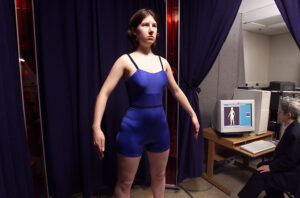
The virtual try-on technologies that are available at the moment offer two methods of improving online shopping. The first involves the creation of an avatar by inputting custom body measurements. Then trying the clothes on the avatar. In this case, the shopper has to be honest about the measurements for the avatar to work. The second method makes use of a computer, tablet, or phone screen that will act as a mirror. It will reflect a shopper and a background while using AR to overlay the chosen garments on the image that the shopper selected, making it easier to decide on an item of clothing.
Baytar and collaborators from Iowa State University and Virginia Polytechnic Institute focused on the latter technology because it uses AR in particular. During the study, participants were asked to virtually try on a garment, select a size to order, and then physically try on a dress in the size that they had chosen. Participants were then asked to evaluate the AR dress for size, fit, and performance, and they had to do the same for the physical dress that they tried on. The results were then compared by the researchers to arrive at an overall conclusion.
The results of the AR technology was mixed after the participants used virtual try-on. Baytar stated that participants could identify the right size with the AR try-on. They had trouble evaluating the fit especially when it came to the bust, hips, and waist. Baytar explained this, stating that even though the image of the dress was taken when the physical dress was on a dress form, rather than hanging flat, it was still only a 2D image. Another aspect that added difficulty to the fit was the fact that the dress’ hourglass form did not match the bodies of all the participants.
Another aspect that produced mixed results was the evaluation of product performance. In terms of style, fabric, color, coordination with other items, touch, and feel, weight, fit, comfort, and appearance on the body, results differed when experienced in AR versus real life. The only performance factor that showed no difference across the two try-on experiences was the color of the dress. Even with these limitations, however, participants responded very well to the virtual dress, and the researchers received positive feedback on the AR garments.
Baytar stated that the attitudes toward the AR garment as well as the real garment were high. This means that participants enjoyed the experience which in turn shows that their purchase intentions were very high, though they were higher for the real garment. She further said that AR is a promising technology. It provides visual information that improves the overall attitudes of the customer as well as their purchasing intentions. She also mentioned that a company could make good use of this technology when introducing a new product for the first time or if they want to create buzz around an already existing product.
The research team also wanted to do further investigation on telepresence. Which is the consumer’s sense of being present in a virtual space, and how it would impact their attitudes and purchasing intentions. The study showed that higher telepresence resulted in higher attitudes that came with an increased likelihood to buy the product.
Even though the study was closed in 2016, Baytar suggested it could be more relevant during the COVID-19 pandemic with physical stores being closed. She said that the technology they used was limited when the study was conducted and that they expect people’s attitudes to evolve as technology evolves.
References:
Barrett, E.C.: Augmented Reality can Improve Online Shopping, Study Finds, Cornell Chronicle. https://news.cornell.edu/stories/2020/05/augmented-reality-can-improve-online-shopping-study-finds May 27, 2020




